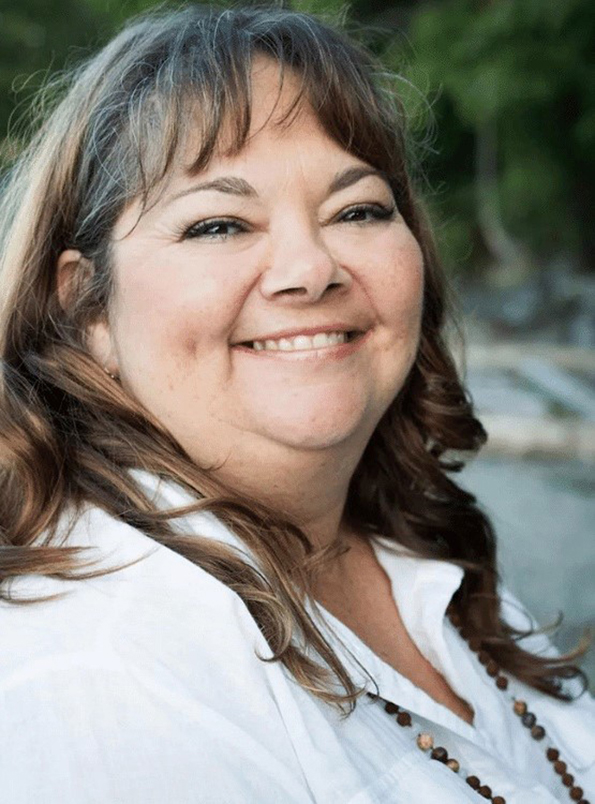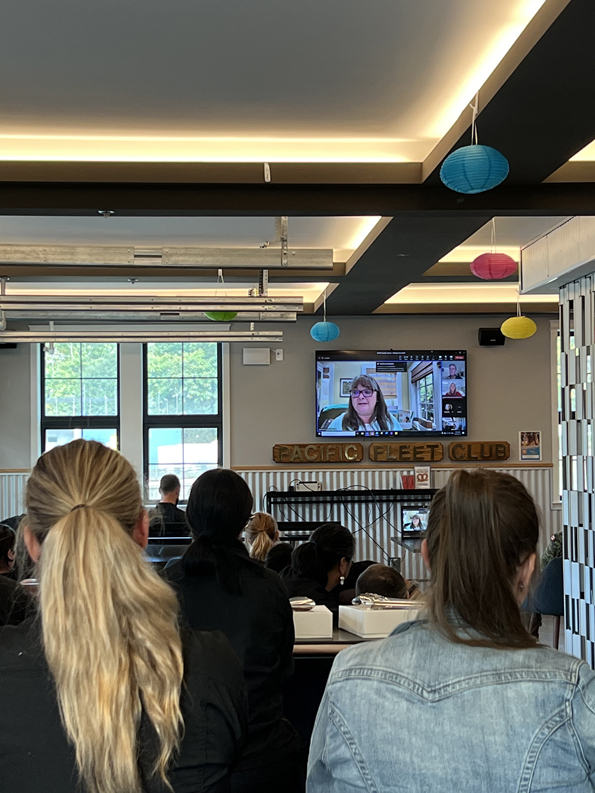Author invokes tears of truth, hope for reconciliation
By Lookout Production on Sep 27, 2023 with Comments 0

Monique Gray Smith
Peter Mallett
Staff Writer
—
Monique Gray Smith shared her journey with the Formation on Sept. 19 with her presentation, Weaving Love and Joy into the Journey of Truth and Reconciliation.
The award-winning author and psychiatric nurse kicked off observances of the National Day of Truth and Reconciliation with an event that drew in approximately 170 attendees from across Canada and elsewhere, and was co-hosted by the MARPAC Health and Wellness Strategy (MHWS) and the Defence Indigenous Advisory Group (DIAG).
“When we speak about Truth and Reconciliation, we need to know what the actual truth is, even though the truth is not the gentle part of our history,” says Smith. “Each and every one of us has the ability to change hearts, minds and spirits and a big part of Truth and Reconciliation is that we must weave love into that journey.”
Smith is of Cree, Lakota and Scottish descent and grew up in the Qu’Appelle Valley in southwestern Saskatchewan. She has been a consultant for government agencies and community organizations since 1990. She has focused on weaving history, resilience, and trauma-informed training for educators, social workers, librarians and early childhood teams.
During her hour-long presentation and 30-minute question and answer session, Smith shared readings from her books and details of how her personal Truth and Reconciliation journey has transformed her life.
Gratitude and Reconciliation
Part of that journey, she says, is tied to her book Braiding Sweetgrass for Young Adults and the adaptation, which she worked on with author Robin Wall Kimmerer. It received the Sigurd F. Olson Nature Writing Award in 2022.
A key message from the book is its fundamental premise of gratitude, based on the centuries-old Haudenosaunee Thanksgiving Address by the Iroquois Nation. Haudenosaunee Thanksgiving is a prayer of appreciation for the natural world and all living things, and an approach Smith believes is fundamental in the reconciliation process.
She then asked her audience to imagine the life of families and communities before colonialization and conflict.

The audience listens at the Pacific Fleet Club to Monique Gray Smith’s presenting on Truth and Reconciliation. Photo: Acting Sub-Lieutenant Kim Wachockier
“Children and families were raised with love and joy, and animals, salmon and plants were seen as gifts and harvested with love and gratitude,” she explained.
All of that began to unravel in the years following first contact. She shared an undated picture of one Residential school near her former home and its modern four-story brick structure towering against the landscape.
Standing in the foreground is a small circle of tents at the edge of the school’s property. The tents, she says, were set up in a faint hope by families that they could somehow glimpse their children from a distance, even though they had lost hope of ever being together with them again.
Several of Smith’s family are survivors of the residential school system, which began in 1851 and concluded in 1996.
“Our family life, connection to the land and our languages were disrupted and dismantled,” she said. “There was threat to our languages, and it is so important that we revitalize them; merely understanding this process also becomes an act of reconciliation.”
But all hope is still there, she says. Smith fought back the tears of sorrow and joy when she said she believes today’s generation of Canadians is being told the truth about the Residential school system. This, she says, pushes the prospects for reconciliation light years forward.
“Because they know the truth about what happened, they will make different decisions,” she said. “I hope their decisions will not be rooted in hate or disgust and this is why there is now cause for us to truly begin our journey towards reconciliation.”
DIAG reacts
Approximately 20 participants watched Smith’s presentation from the Pacific Fleet Club at CFB Esquimalt, who hosted a viewing party with coffee and bannock bites to those in attendance. Captain (Navy) Kevin Whiteside, Base Commander and Champion for the Defence Indigenous Advisory Group, and Ken Hall, DIAG Chair, both provided welcome messages to Smith and the territorial acknowledgement to the Songhees and Esquimalt Nations.
Hall said he was incredibly impressed with Smith’s presentation, saying she was not alone in her sorrow for the past and optimism for the future.
“Monique Gray Smith is a gifted storyteller whose presentation of Truth and Reconciliation evoked deep thought and emotion,” he said. “I can’t speak for everyone who attended but I know that I was not dry-eyed for the entirety of her presentation, and hearing other’s stories really helps us in our healing process and personal reconciliation journeys.”
In 2019, Smith received the City of Victoria Leadership Award for Reconciliation. She is an appointed member of the Board of Directors of Royal Roads University, the Minister’s Advisory Council for Indigenous Women for the Government of B.C., and the elected President of the Board of Directors for the Victoria Native Friendship Centre.
Smith’s presentation was recorded and viewed via an internal link on the Splash Page.
Filed Under: Top Stories
About the Author:





